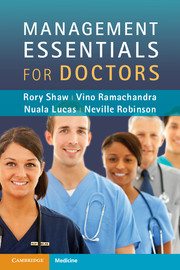Book contents
- Frontmatter
- Contents
- Contributors
- Foreword
- Preface
- Acknowledgements
- Section 1 Core knowledge
- Section 2 Core skills
- Section 3 Important bodies
- Section 4 Information, evidence and research
- Section 5 Money
- Section 6 NHS structures
- Section 7 Operations
- Section 8 Safety and quality
- Section 9 Staff issues
- Chapter 50 Managing staff
- Chapter 51 Employing new staff to the organization and starting work
- Chapter 52 Managing normal working
- Chapter 53 Job planning
- Chapter 54 Appraisals
- Chapter 55 Revalidation
- Chapter 56 Managing poor performance
- Chapter 57 Managing other problems
- Chapter 58 Measuring how well we manage staff
- Chapter 59 Managing stress
- Chapter 60 The sick doctor
- Index
Chapter 51 - Employing new staff to the organization and starting work
Published online by Cambridge University Press: 05 March 2012
- Frontmatter
- Contents
- Contributors
- Foreword
- Preface
- Acknowledgements
- Section 1 Core knowledge
- Section 2 Core skills
- Section 3 Important bodies
- Section 4 Information, evidence and research
- Section 5 Money
- Section 6 NHS structures
- Section 7 Operations
- Section 8 Safety and quality
- Section 9 Staff issues
- Chapter 50 Managing staff
- Chapter 51 Employing new staff to the organization and starting work
- Chapter 52 Managing normal working
- Chapter 53 Job planning
- Chapter 54 Appraisals
- Chapter 55 Revalidation
- Chapter 56 Managing poor performance
- Chapter 57 Managing other problems
- Chapter 58 Measuring how well we manage staff
- Chapter 59 Managing stress
- Chapter 60 The sick doctor
- Index
Summary
Writing the job description
This is the most important step. What do you actually want the person to do? The greater the thought and precision that goes into writing down the answer to this question in the job description, the greater the chance that you will select the person most capable of doing what you want. Most consultant medical staff job descriptions are surprisingly light on detail. Perhaps this is because of the politics of managing multiple views from individuals both inside the organization and externally, for example at the relevant Royal College, and partly caused by a desire to give an appointee freedom to develop their career in a direction of their choosing. There is a powerful argument that if you want a particular task done, it should be in the job description.
Writing the person specification
The person specification leads directly on from the job description. The specification defines the attributes the person must have to deliver what is in the job description. These attributes can be technical, e.g. competent accredited colonoscopist/ATLS trainer, or behavioural, e.g. ability to lead a team, excellent relations with patients. The person specification is then used during selection to test which candidates have the evidence to show they can match the desired attributes.
- Type
- Chapter
- Information
- Management Essentials for Doctors , pp. 160 - 162Publisher: Cambridge University PressPrint publication year: 2011



